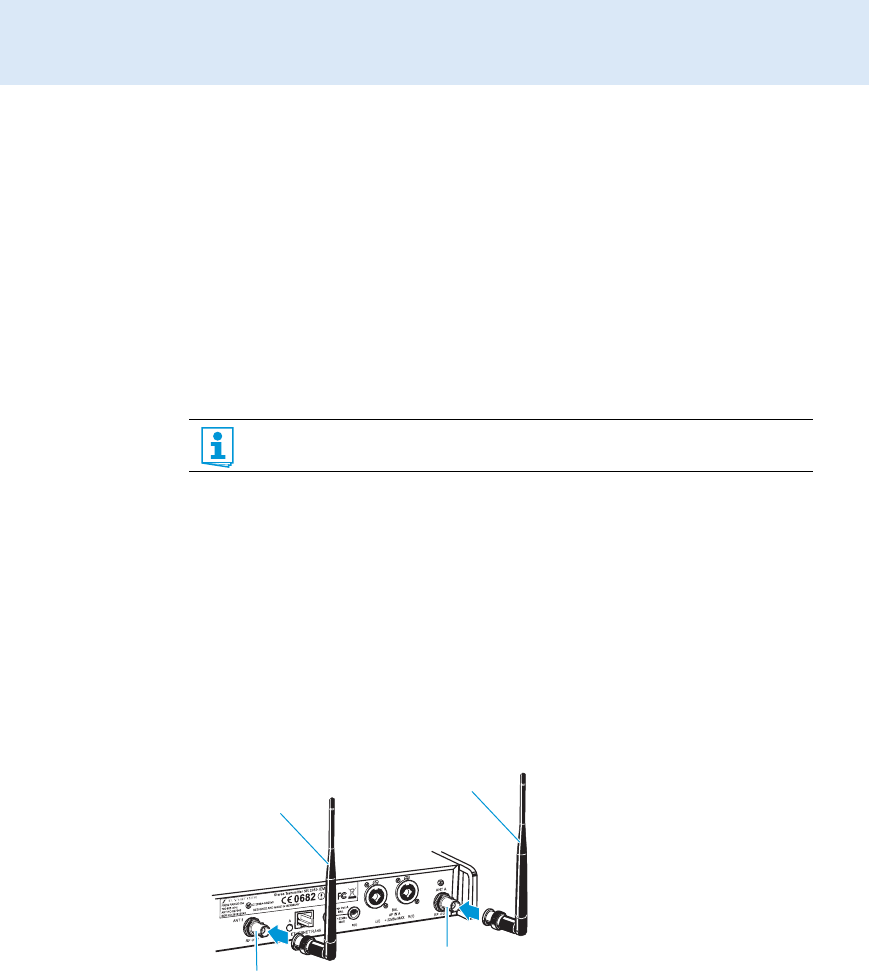
Putting the transmitter into operation
9
Connecting and positioning a remote antenna
Use a remote antenna when the transmitter position is not the best antenna position for
optimum transmission. You can choose between two antennas (see “Accessories” on
page 34):
• A 2003 UHF passive directional broadband antenna
• A 1031 passive omni-directional broadband antenna
̈ Use a low-attenuation 50-Ω cable to connect the antenna to the transmitter.
̈ If possible, use a short antenna cable and as little connections as possible, since long
cables and many connectors lead to an attenuation of the antenna signal.
̈ Position the antenna in the same room in which the transmission takes place.
̈ Observe a minimum distance of 1 m between the antenna and metal objects (including
reinforced concrete walls).
Connecting several transmitters to a remote antenna
To make multi-channel systems, you should use the AC 3200 antenna combiner (optional
accessory). The AC 3200 allows you to operate up to eight transmitters with a single antenna
without virtually any intermodulation.
̈ Connect the AC 3200 antenna combiner to the BNC socket ƽ.
Connecting the rod antenna to the rear of the transmitter
The supplied rod antenna ƾ is suitable for all applications where the transmitter is to be put
into operation without a large amount of installation work.
̈ Connect the rod antenna ƾ to the BNC socket ƽ.
Mounting the antennas to the front of the transmitter
To mount the antenna connections to the front of the transmitter, you require the
GA 3030 AM antenna front mount kit (optional accessory). The GA 3030 AM consists of:
You can connect several transmitters to the same remote antenna (see next section).
ƾ
ƽ
ƽ
ƾ


















